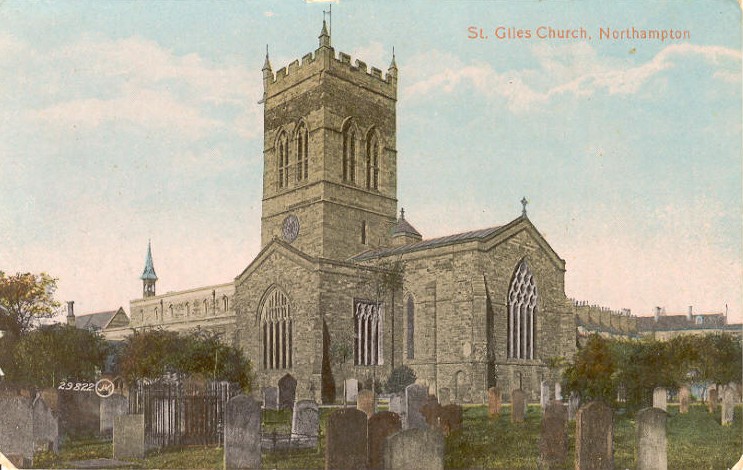I thought today would be a good day to share some of my inspirations for the setting(s) of The Enemy Within. This is because I have been writing this week (gasp!) and so my attention is currently engaged in that pursuit. I thought a quick dip into some of my research would not tax my writing abilities too much, so here we go.
While the first half of The Enemy Within is set in Kentucky, the second half is set in Jolly Ol' England. Being the good Anglophile that I am, I have striven to remain as accurate as possible in my depiction of London and the countryside of Victorian England. I thought a I knew a lot about the time period, but I've actually increased my knowledge as I have travelled the internet looking for sources of inspiration.
My setting in England is Northamptonshire. The county seat is in Northampton, approximately 75 miles northwest of London. I had a rather convoluted way of choosing this area. When Julienne flees Kentucky, her destination is France. But when she arrives in New York, the only steamer leaving the port is bound for Liverpool. Naturally, she does not want to tarry long in England, given that it is her traitorous husband's homeland. Once I got Julienne to Liverpool, I had to get her to London and then on to Dover so she could catch the packet to France. I think this was the hardest part of my research: finding an accurate map of railways in England. I was fortunate in that I stumbled on a website devoted to the history of the London and Great Northwestern Railway. Taking a map from the period, I was able to trace the route from Liverpool to London. Since Julienne gets stranded and eventually has to stay in England, I needed to pick a place along the rail line that had a few substantial castles. Northampton fit the bill in that regard as there were three substantial estates in the countryside around it. Here are some early 20th century postcards of Northampton.
Now the three estates that I speak of are Althorp, Castle Ashby, and Holdenby House. As many of you know, Althorp was the late Lady Diana Spencer's ancestral home, and is still owned by her brother, the ninth Earl Spencer. I thought it was fitting to write this post as we are a few months away from Lady Diana's son, Prince William's marriage (Anglophiles rejoice!)
Althorp is my inspiration for Alex's family estate. As mentioned in a previous post, Alex is viscount and heir to his father, the earl. They are a fabulously wealthy family, and the earl is very powerful in the House of Lords. In the novel, their estate is called Everwood.
 Althorp was built towards the end of the sixteenth century, but as with most of these old houses, improvements and additions were made. It was built of red brick originally, and had a central courtyard. The courtyard was eventually filled in to house a grand hall and staircase. The present house is the result of Henry Holland's neo-classicising of the facade in the 1700s. Also Le Notre (of Versailles fame) designed the gardens.
Althorp was built towards the end of the sixteenth century, but as with most of these old houses, improvements and additions were made. It was built of red brick originally, and had a central courtyard. The courtyard was eventually filled in to house a grand hall and staircase. The present house is the result of Henry Holland's neo-classicising of the facade in the 1700s. Also Le Notre (of Versailles fame) designed the gardens. My second inspiration is a mixture of two houses: Castle Ashby and Holdenby House. I took the name Ashby and applied it to Julienne's landlord, Lord Richard Ashby. Castle Ashby was originally the seat of the Earls of Compton, and is a beautiful building. But I wanted something a little different in design for Lord Richard's home and so I chose Holdenby House. It is a lovely Jacobean style castle that I simply adore.
The picture that you see to the left is what remains of Holdenby. It was restored in the 1870s by Lady Clifden and Victorian architect Richard Carpenter. The original house was much larger, in fact when it was built in 1583, it was the largest in England
The house was later purchased by Adam Baynes, who pulled down the whole thing save for the current wing. Fortunately, after reverting to the crown once again, the home was purchased by the Duke of Marlborough in 1709. Descendents of his line own the house today and it is available for meetings and weddings.
So now you know some of the places that are featured in the later half of The Enemy Within. Compiling all this information has certainly been a chore, but also terribly interesting. Have you uncovered any interesting information in your novel research?







